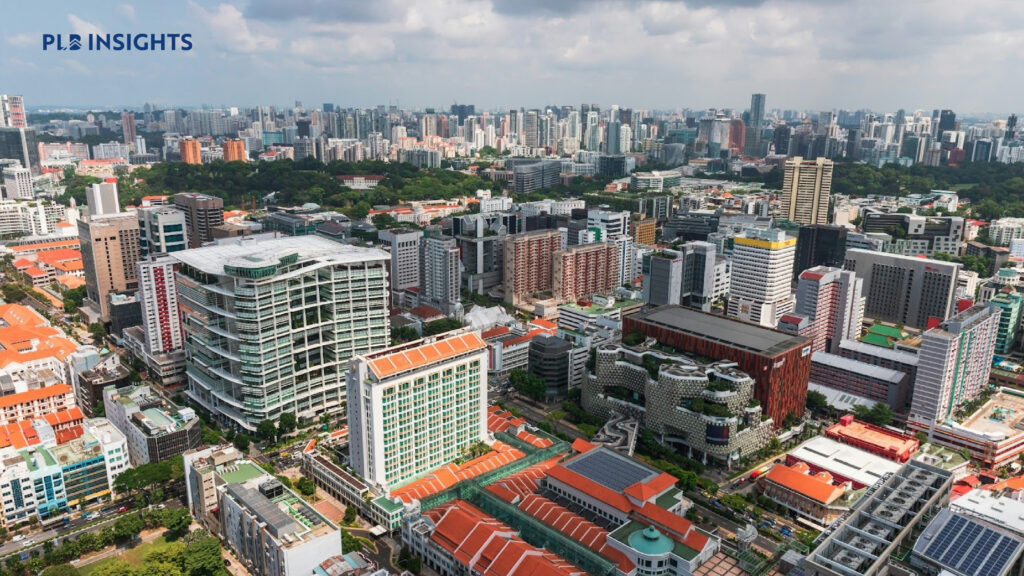
The concept of shoebox units has been a longstanding solution to the space constraints and housing challenges that come with land-scarce Singapore. The modestly sized compact living spaces offer an alternative for individuals seeking affordable and conveniently located housing options in Singapore’s urban centres.
In this article, we delve into the essence of shoebox apartments, exploring their defining characteristics, the different benefits they offer residents, and the challenges that come with the reality of living in one of these units. We will also examine whether living in a shoebox apartment aligns with your preferences, needs and lifestyle, helping you decide whether it could be the ideal choice for you.
What Are They?
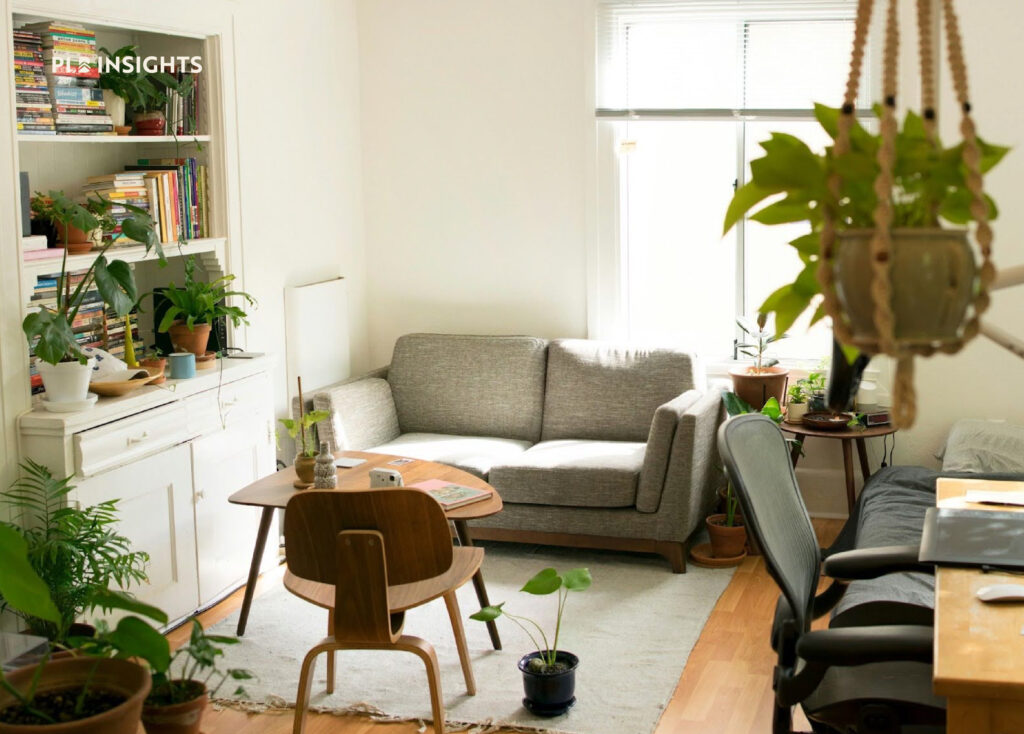
A shoebox apartment is a compact unit that is 500 square feet or less with a 1 bed 1 bath configuration, on average. These apartments or condo units are typically found in cities that are densely populated and have space constraints.
Despite their size, shoebox apartments are designed for functionality. They often feature open-plan layouts and storage solutions that enable residents to optimise space and increase functionality. Moreover, these apartments are generally more affordable than larger ones and come with basic amenities including a combined sleeping and living area, a kitchenette and a small bathroom.
The Appeal of Shoebox Apartments
From financial flexibility to a minimalist lifestyle, shoebox apartments offer a range of benefits and can be an appealing housing option for many. Let’s go over some of the benefits they provide.
Affordability
Renting or buying a shoebox apartment is typically a more affordable option than larger units, making it a good choice for individuals seeking a budget-friendly living space–especially in urban centres of Singapore. The affordability of shoebox apartments allows residents to live in desirable and convenient city locations without the hefty rent of larger apartments or condos.
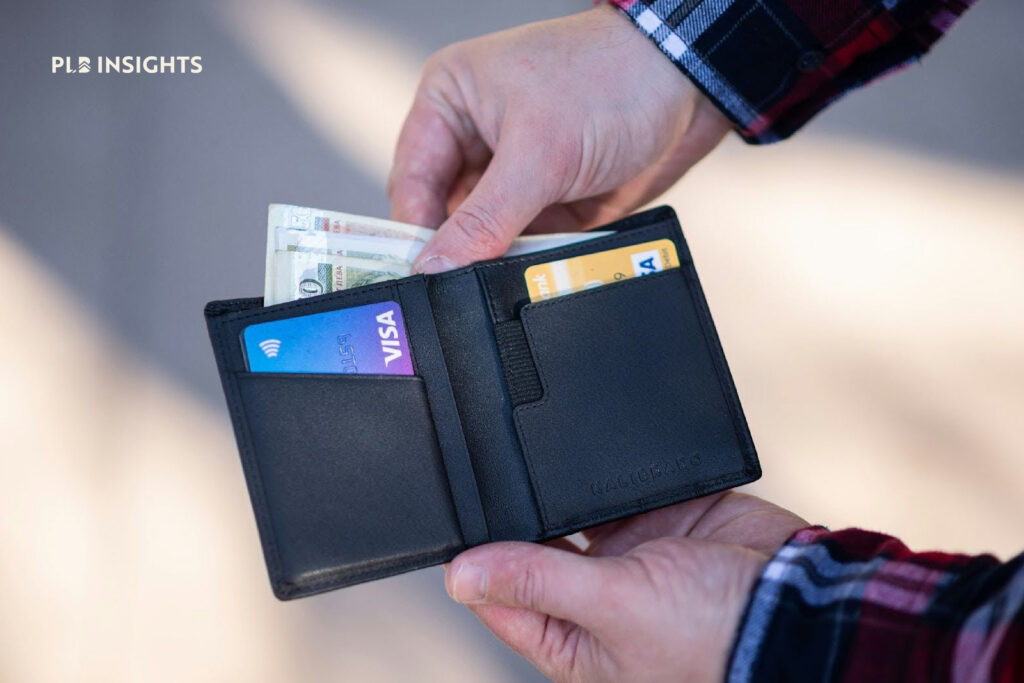
Financial Flexibility
In addition to the affordability of shoebox apartments in terms of renting or owning, the overall cost of living in one is also lower than that of larger units. For instance, the utility costs of a shoebox apartment could be lower as it requires less energy to heat, cool and illuminate the space. The lower cost of living in these units can provide residents with financial flexibility, allowing them to allocate finances and resources to other areas of their life including travel, education, hobbies and passions, or savings.
Convenience of Location
Shoebox apartments that are located in prime areas of Singapore can provide residents with easy access to amenities, public transport and the vibrant city life found in these locations. Despite the potential downside of limited space, individuals, particularly singles or those prioritising aspects like career advancement, can reap significant benefits from residing in the city centre or Central Business District (CBD).
Conversely, shoebox apartments in non-central areas of Singapore still afford residents access to condo-like facilities at a more affordable price point, coupled with the convenience of suburban living.
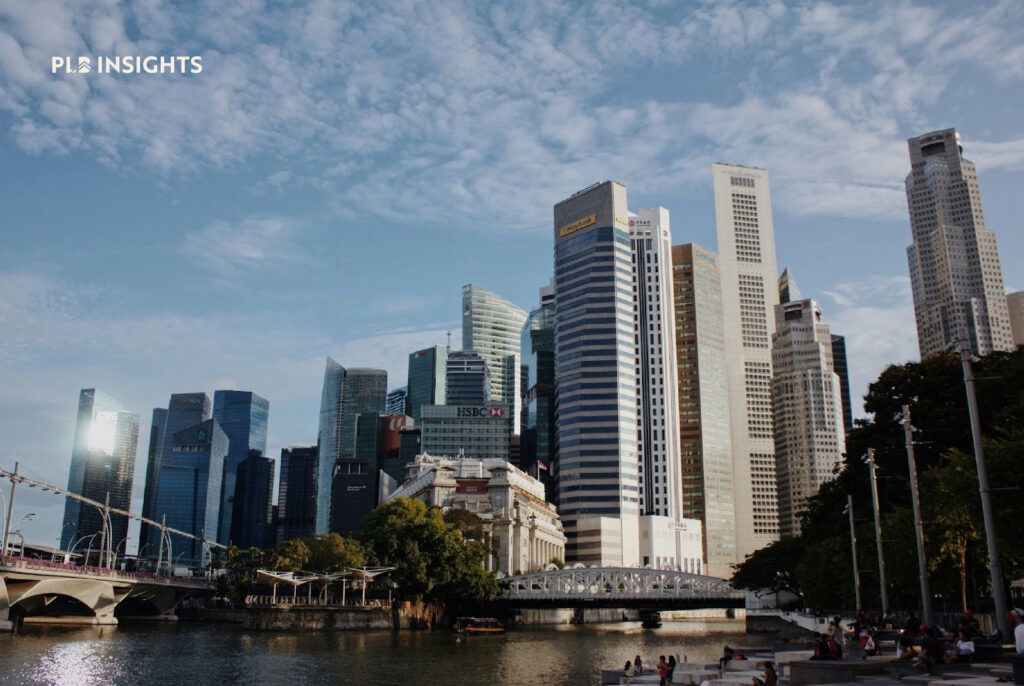
Minimalist Living
Living in a shoebox apartment can often encourage residents to adopt a more minimalistic way of life. For those who find the idea of living without much clutter, a shoebox apartment can be a great way to prioritise essential belongings and make efficient use of the space they have. This can contribute to a clutter-free and simplified living environment over time. This also may contribute to more financial flexibility as individuals can save on material items they purchase and prioritise other experiences in different areas of their lives.
Environmental Impact
Shoebox apartments offer another significant advantage–a reduced environmental footprint compared to larger residences. With their smaller size, these units require lower levels of energy usage and resources, allowing residents to live more sustainable lifestyles. Moreover, the Singapore government’s commitment to building a greener city aligns with the concept of shoebox apartments, as they promote functionality and efficiency on all levels.
By encouraging individuals to embrace compact living, shoebox apartments contribute to a more sustainable urban environment, supporting the government’s initiatives for a greener and more environmentally friendly cityscape.
Considerations: The Reality of Living in a Shoebox Apartment
Living in a shoebox apartment comes with challenges and certain considerations individuals must take note of.
Space Constraints
While there are various benefits of living in smaller units, the space constraints that come with residing in a shoebox apartment can present challenges for residents. Individuals may need to carefully consider their belongings and prioritise essentials. Additionally, it will be crucial to find ways to optimise the space they are offered in terms of storage and organisation. If selling or donating items is not a possibility, a potential solution could be to rent out a small self-storage facility to store non-essentials.
Unsuitable for Long-Term Living
While shoebox apartments may be a good choice for younger individuals looking for short-term accommodation, these apartments can present additional challenges if individuals opt for long-term residence. Moreover, residents who plan on living with a partner and eventually starting a family may find that a shoebox apartment will not be the most convenient option due to inadequate space for growth, adaptability and housing more than one or two people. This, however, could be an investment for property owners who want to rent out their apartments to a pool of buyers looking for compact living spaces.
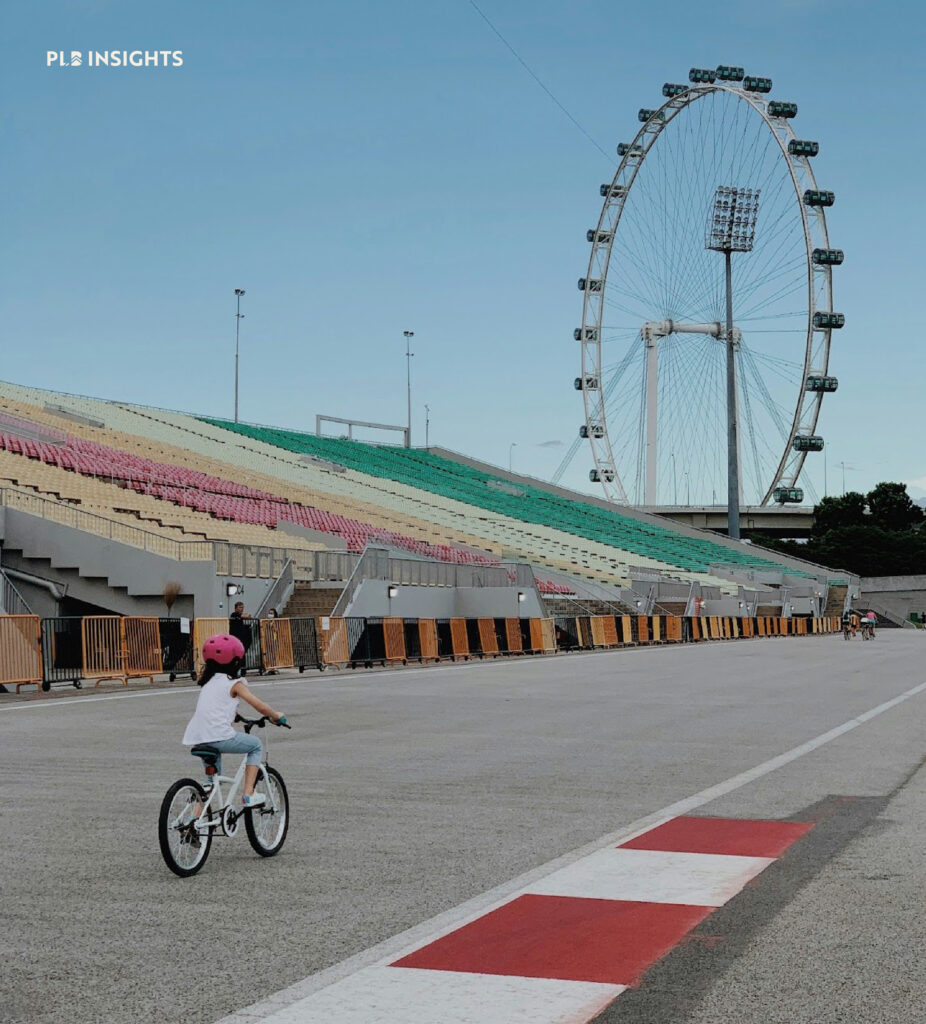
Comfort and Livability
Over time, the limited space of a shoebox apartment can pose challenges in terms of livability and comfort. With changing needs and preferences, residents may find it more difficult to adapt to compact living conditions. Additionally, there are psychological impacts such as feelings of confinement or claustrophobic tendencies that could negatively affect individuals.
Rising Prices Due To Guidelines
With new guidelines issued and put into effect by the Urban Redevelopment Authority (URA) in early 2023, developers within central areas of Singapore are now obligated to limit shoebox apartments that are under 500 SF. With fewer shoebox apartments in the market, prices for existing units are continuing to climb up gradually. This could pose a challenge for those seeking affordable compact units in central areas. On the other hand, property owners of shoebox apartments may find a smaller pool of buyers for their property when they want to sell.
Shoebox Apartments: Performance Over The Years
The performance of shoebox apartments in Singapore’s property market is a reflection of factors such as affordability, regulatory considerations, shifting buyer preferences and market demand.
Shoebox apartments first gained popularity due to investors and young professionals looking for affordable accommodation in prime locations in the city. Their compact size and lower price made these apartments an attractive choice for buyers looking for homes in urban areas.
In 2006, when shoebox apartments first started gaining relevance, the average price of each unit in the central region started at $761 PSF. Over the decades, the sale of shoebox apartments has seen a gradual increase, with the central region averaging $2,269 PSF at present. The graph below highlights the shifts in prices from 2006 to 2024.
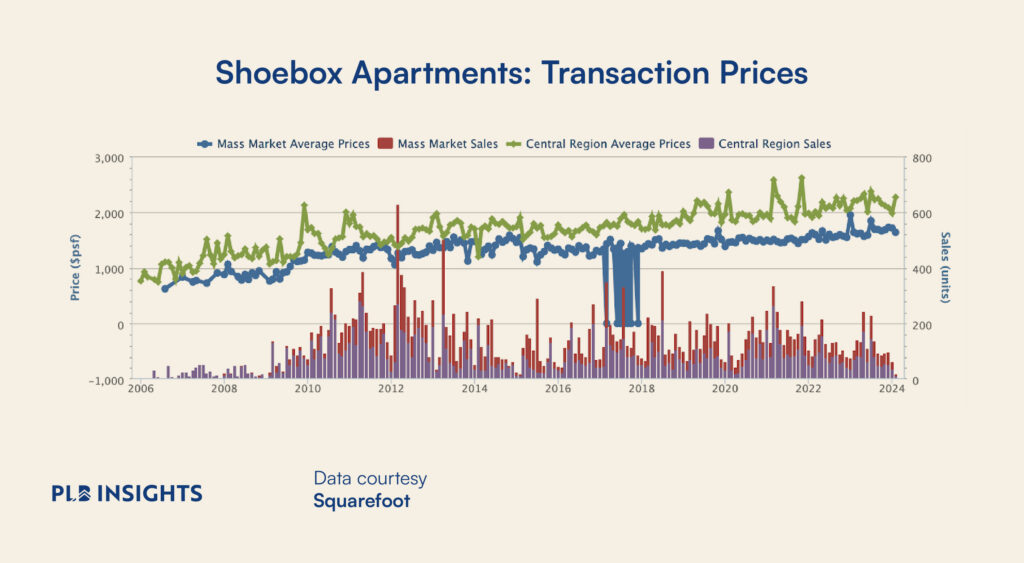
Then with new guidelines that were put into effect by the URA in response to concerns about the growth of shoebox apartments, developers faced restrictions on the minimum size requirements for these units. As a result of this, they are now required to cater to a wider range of housing needs by creating larger units that are a minimum of 750 SF in central areas of Singapore. This could be an overall positive shift as it reflects the shift in buyers’ perspective, with some individuals prioritising larger living spaces to either start families or have more space for remote work arrangements.
Is This The Ideal Choice For You?
As you consider the different housing options available for you, including a shoebox apartment, it is essential to evaluate whether this living arrangement aligns with your priorities, lifestyle, needs, preferences, and long-term goals and housing needs.
For instance, if you are a young professional or a student seeking affordable and accessible short-term accommodation–this housing type could be a good option for you. Similarly, this is an ideal choice for single individuals and advocates for minimalistic living who do not require a lot of space, prioritise experiences over material possessions, and are looking for a simplified living environment.
Conversely, if you are considering purchasing your forever home to grow a family in, this may not be the right option for you. Individuals who are looking for long-term accommodation and require storage or a larger space for a home office might find that larger units are a more suitable choice.
Ultimately, the housing market offers a diverse array of options tailored to accommodate individuals with varying lifestyles and preferences. Factors such as duration of residence, budget constraints, personal preferences, and specific needs all play crucial roles in determining the ideal accommodation. By carefully assessing your lifestyle, priorities, and the reality of compact living, you can make an informed decision about whether a shoebox apartment aligns with your needs and preferences to enhance your quality of living.
Closing Thoughts
Singapore’s shoebox apartments offer a unique housing solution in the city’s urban landscape. With their affordability, accessibility and the potential for minimalist living, they offer residents a convenient option for urban living. However, they do also come with challenges and considerations associated with living in a smaller space or owning property of this size.
Understanding and comprehensively assessing the potential trade-offs and benefits of living in a shoebox apartment is essential for individuals seeking compact living spaces in Singapore and ultimately finding the ideal housing option for themselves.
If you are in the market for an investment property or exploring shoebox apartments to add to your portfolio, feel free to contact us here. Our team of experienced consultants will be glad to guide you through the financial calculations and other considerations that will best suit your needs.
Until then, See you in the next one!







